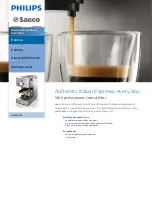
26
5. Tire lentamente de la tela en la dirección de la
flecha de forma que los extremos de los hilos
de la aguja queden estirados hacia la parte
posterior de la tela.
6. Corte el hilo de la cubierta y el hilo del Looper
a unas longitudes que puedan anudarse.
NOTA:
Recomendamos que utilice unas tijeras para
cortar el hilo del Looper. También puede utilizar
unas tijeras para cortar los hilos de la máquina.
NOTA:
Puede coser hasta el borde de un tejido y
también coser dicho borde para crear una
cadena de hilo. Corte el hilo cuando haya
cosido cualquier longitud de la cadena.
7. Utilice un objeto puntiagudo, como por ejemplo
una aguja, para insertar el hilo de la cubierta
desde la superficie de la tela, y luego tire del
hilo en la parte posterior de la tela.
8. Tire de todos los hilos en la parte posterior de
la tela.
Ate todos los hilos y córtelos.









































